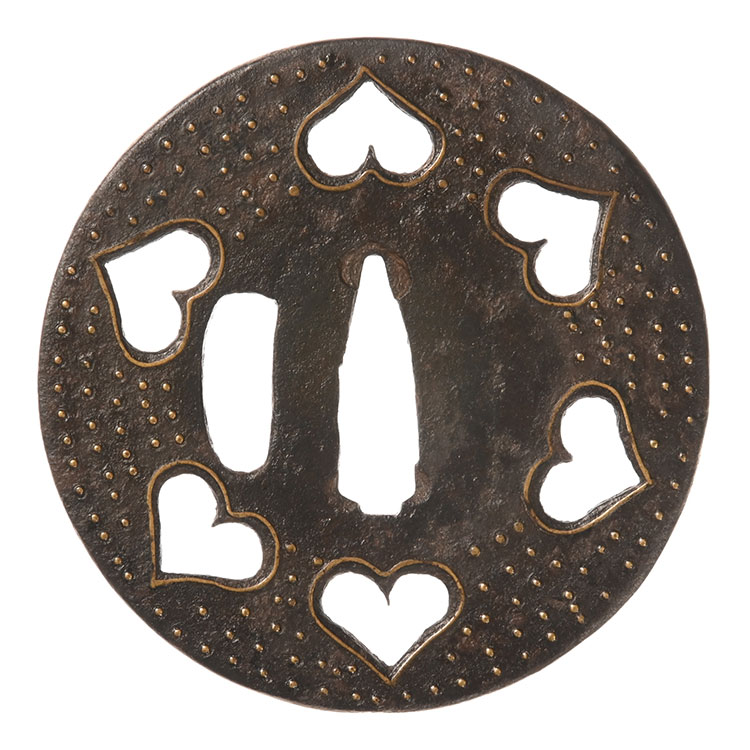
保存刀装具Hozon Tousougu
応仁鍔/鐔Ounin Tsuba
No.881191応仁 六方猪目透真鍮象嵌鍔Ounin Roppou Inome Sukashi Shinchu Zougan Tsuba
ご成約Sold
- 極めKiwame
- 応仁Ounin
- 法量Size
-
縦 7.27cm 横 7.18cm 切羽台 0.32cm 中心孔縦 2.67cm 中心孔横 0.8cm 重量 68.8g
Length 7.27cm Width 7.18cm Seppadai 0.32cm Nakaoana-Length 2.67cm Nakaoana-Width 0.8cm Weight 68.8g
- 説明Drscription
- 丸形 鉄地 陰透 真鍮象嵌 丸耳
応仁鐔とは、室町時代の制作で名称のように応仁年間に初めて作られたという見地から作られた呼称である。作風は鉄地の薄手の板鐔にに真鍮で点や線の象嵌を施したもので、小透を加えることが多い。また定紋や単純な図様を据紋象嵌にする作もある。
猪目(いのめ、いめ)とは、ハートの形をした日本古来の文様。猪(いのしし)の目に由来している。魔除けの装飾として古くから鐺や鍔、柄頭など刀剣や小刀の刀装具などに彫られる。Marugata Tetsuji Kagesukashi Shinchu-Zougan Marumimi
Ounin tsuba is a name coined from the viewpoint that it was produced during the Muromachi period and, as the name suggests, was first made during the Ounin era. The style is Tetsuji's thin Ita-Tsuba with brass dots and lines, and Ko-Sukashi is often added. There are also works that use fixed crests or simple designs as Suemon-Zougan.
Inome (Inome or ime) is an ancient Japanese heart-shaped pattern. It originates from the eyes of a wild boar.
It has long been carved into the fittings of swords and small knives, such as Kojiri, Tsuba, Tsuka, and Kashira, as decoration to ward off evil spirits.


